The guide to ecommerce email marketing: Best practices and strategies
 Katie Morley
Katie Morley
Dec 22, 2023
 Katie Morley
Katie Morley
Dec 22, 2023
 Katie Morley
Katie Morley
Dec 22, 2023
 Katie Morley
Katie Morley
Dec 22, 2023
For ecommerce marketers, email is non-negotiable. Marketers generate an average of $42 in sales for each $1 spent sending emails.
However, competition has never been fiercer, and with customer acquisition costs (CAC) increasing by over 222% in the past eight years, marketers need to find new ways to acquire and retain customer interest.
If you want to reduce that CAC, it’s time to incorporate recent trends and best practices to leverage your ecommerce email marketing efforts. Leading European retailer, NA-KD, increased CLTV by 25% by simply incorporating personalized email marketing into its omnichannel customer journeys.
Read on to discover the importance of ecommerce email marketing, the 2024 trends and best practices, and the leading ecommerce email marketing software options for 2024.
What is ecommerce email marketing?
What’s trending in ecommerce marketing for 2024?
Ecommerce email marketing best practices for 2024
How do I choose the best ecommerce email marketing software?
Discover the best ecommerce email marketing software for 2024
Power your ecommerce marketing efforts with the right email marketing software
Ecommerce email marketing FAQs
Ecommerce email marketing is a targeted digital communication strategy where retailers send emails to potential and existing customers to promote their products or services, build brand awareness, and drive sales.
It involves crafting personalized messages based on customer behavior, preferences, and purchase history to enhance engagement and foster customer loyalty. By leveraging email as part of an omnichannel marketing strategy, businesses can deliver timely promotions, product updates, and relevant content to their audience’s inbox, influencing purchasing decisions and maximizing revenue.
As we enter 2024, keeping your prospects and customers informed and engaged has never been more important (or difficult). Keep up with the following trends and expectations to increase conversions and turn your prospects into long-term brand advocates in 2024.
Marketers need to use predictive analytics and AI to inform and refine their email strategies.
AI-powered solutions analyze data to predict customer behavior and preferences, enabling hyper-personalized content and product recommendations. By deeply personalizing your emails with relevant content, marketers are more likely to enhance engagement and boost conversions as customers feel seen and valued.
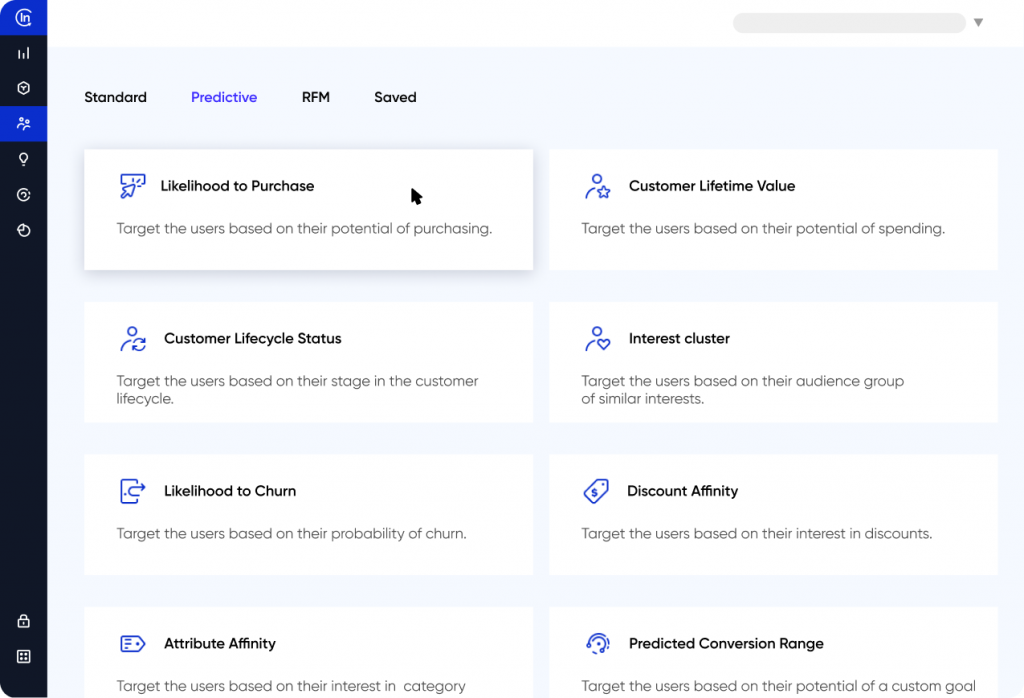
In 2024, there’s no need for mundane, text-heavy, static emails. Customers want interactive email content that enables them to engage with elements within the email.
Embed forms, countdowns, surveys, and ecommerce elements directly into your emails to deliver a seamless user journey without the need for users to visit external websites
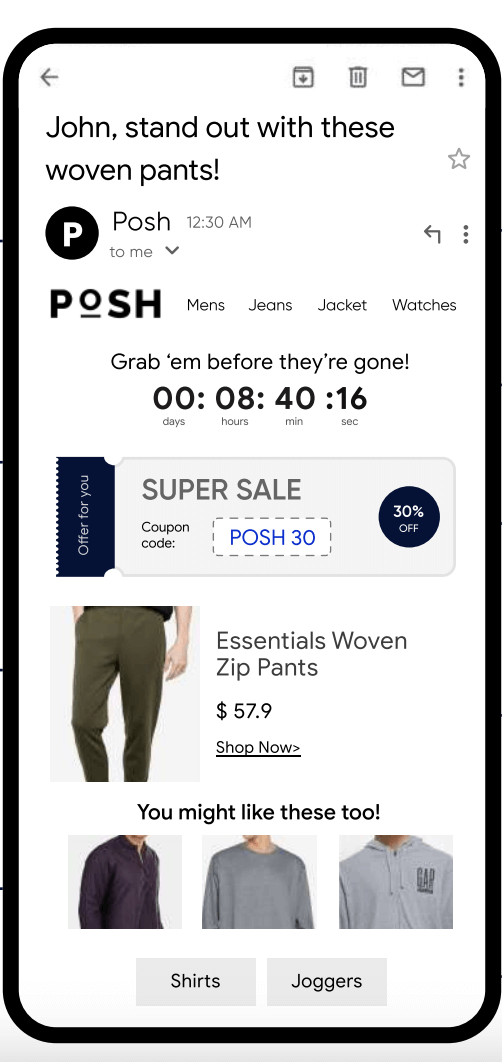
People want to hear from people. You can tell customers repeatedly that you offer the best quality products in the market, and they still won’t believe you. Instead, you need proof from other customers just like them.
Adding one review, testimonial, or five-star rating to your email content can transform conversions.
“Our goal was to drive conversions and purchases. We saw a 20% increase in conversions in just one month. We also loved that Insider’s Social Proof campaigns are customizable, enabling us to personalize our brand requirements.”
- Ecommerce Manager at Hunkemöller
Email is a powerful channel, but there’s no underestimating the impact of multiple touchpoints. The power lies in creating a seamless customer experience across various channels, strengthening brand consistency and customer engagement.
By building a cross-channel strategy and incorporating email with channels like social media, SMS, and App, marketers have more opportunities to build brand familiarity, enhance customer interactions, boost loyalty, and drive conversions.
To effectively connect with your audience, generate revenue, and achieve ROI through ecommerce email marketing in 2024, you need to embrace the following strategies:
When Slazenger launched a personalized ecommerce email marketing strategy to engage customers, the global sports retailer saw a 49X ROI, and recovered 40% of revenue in just eight weeks.
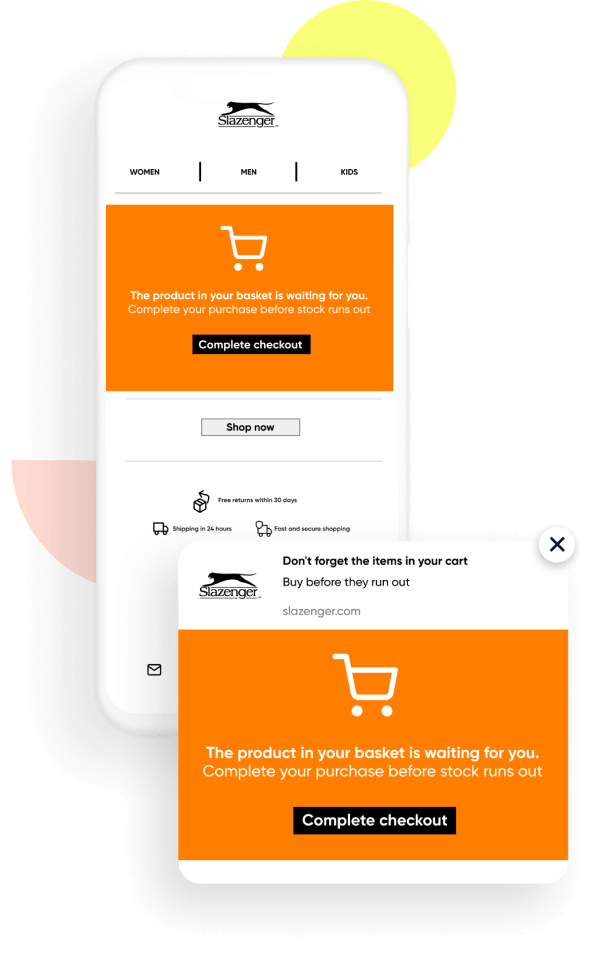
Timing is crucial in any marketing campaign. There’s no point in sending communications at 2AM when customers aren’t awake to receive your content.
The first step is segmenting your list based on customer behavior and time zones. Use workflows and attributes to trigger emails, and consider the timing of your campaigns with holidays and special events for maximum impact. Leverage solutions such as Insider’s Send Time Optimization, which uses data-driven insights to determine the most optimal times to send your emails, increasing the likelihood of them being opened and read by your recipients.
Consistency is critical to building brand trust and improving the personalized customer experience.
Maintain the same tone of voice in your emails, including logos and colors. When searching for an ecommerce email platform, look out for customizable templates to alleviate manual customizable effort while ensuring alignment throughout your campaigns.
Continuous improvement is vital if you want to long-term success. Regularly monitor email performance metrics like open rates, click-through rates, and conversion rates with your analytics tools.
You should also test multiple variations with A/B/n testing, so you can regularly review and adapt your emails based on their success. Comprehensive email marketing software should offer AI-powered A/B testing. This automatically chooses the most effective email variant from your tests, ensuring your campaigns are automatically optimized for the best results.
Learn more about email marketing best practices.
Consider the following capabilities when on the lookout for your ecommerce email marketing software:
Insider has the most extensive email capabilities on the market. The omnichannel marketing platform offers deep segmentation, AI-powered predictive capabilities, and 120+ behavioral attributes to maximize personalization and enhance ecommerce email marketing efforts.
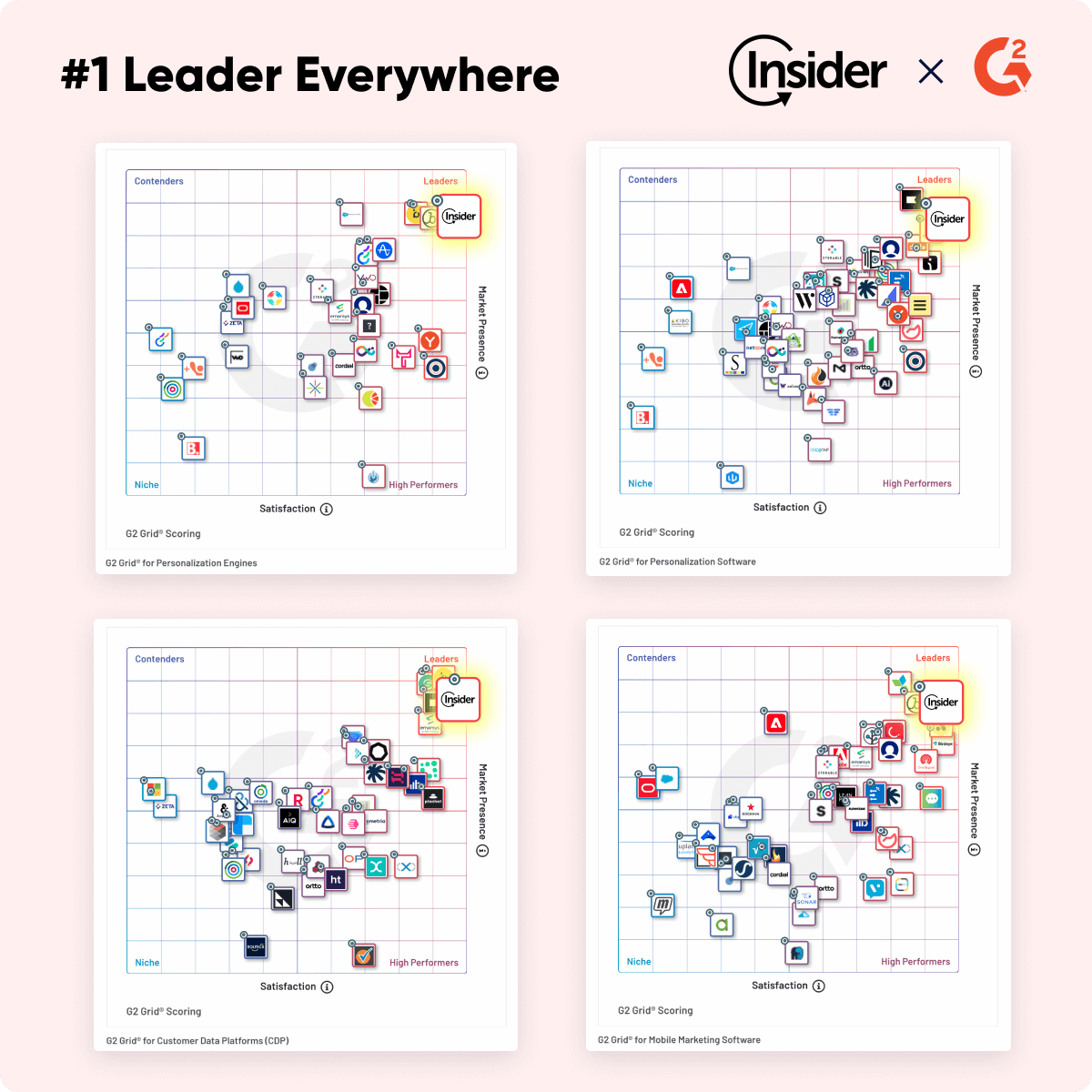
⭐⭐⭐⭐⭐
“The email channel allowed us to keep both existing and churned users updated about real-time offers, discounts, products back in stock, and more, ultimately bringing them back to our website and resulting in increased sales.”
- Digital Marketing Executive on G2
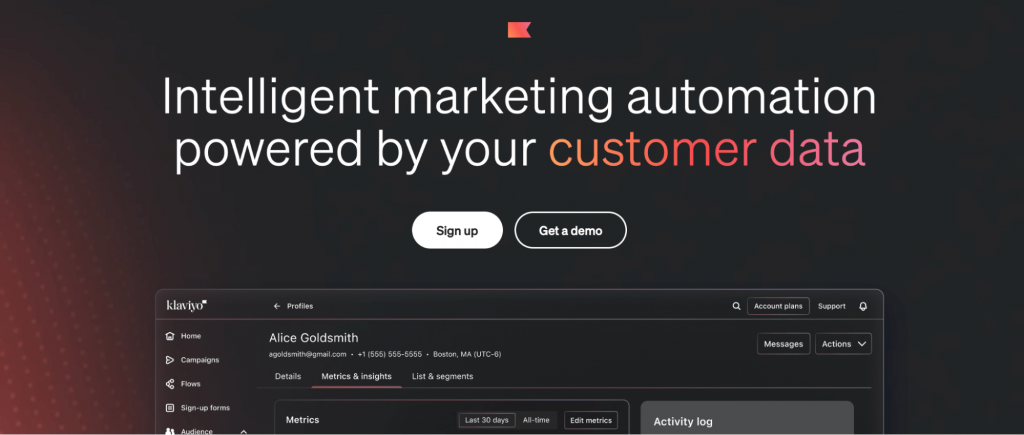
Klaviyo is an email marketing platform suitable for small and mid-sized businesses. It offers various personalization and automation capabilities. However, the text editor in the email has limitations in usability, and some create inconsistencies in the email flow. It also limits the number of emails you can send in one email based on the account level.
Learn: 11 Best Klaviyo Competitors & Alternatives
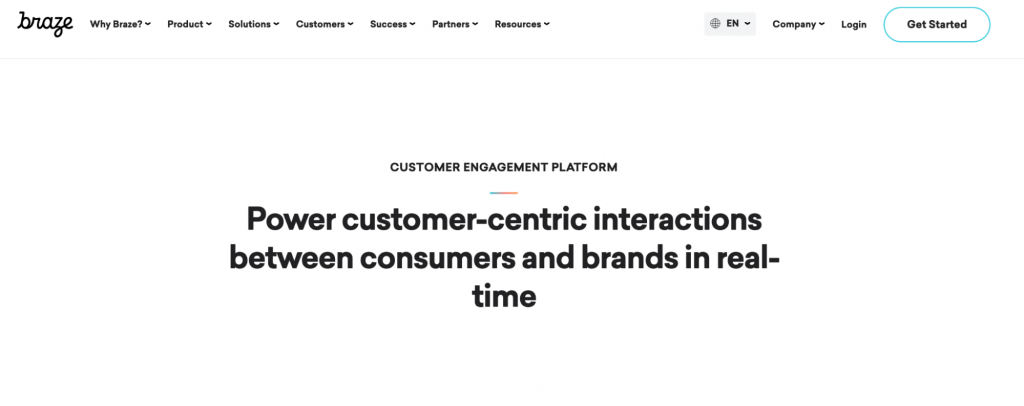
Braze is a comprehensive customer engagement platform that includes email marketing. It’s known for its omnichannel approach, allowing businesses to create consistent messaging and experiences across channels. The platform doesn’t allow you to optimize pre-existing campaigns or update journeys that aren’t performing well.
Learn: 11 Best Klaviyo Competitors & Alternatives
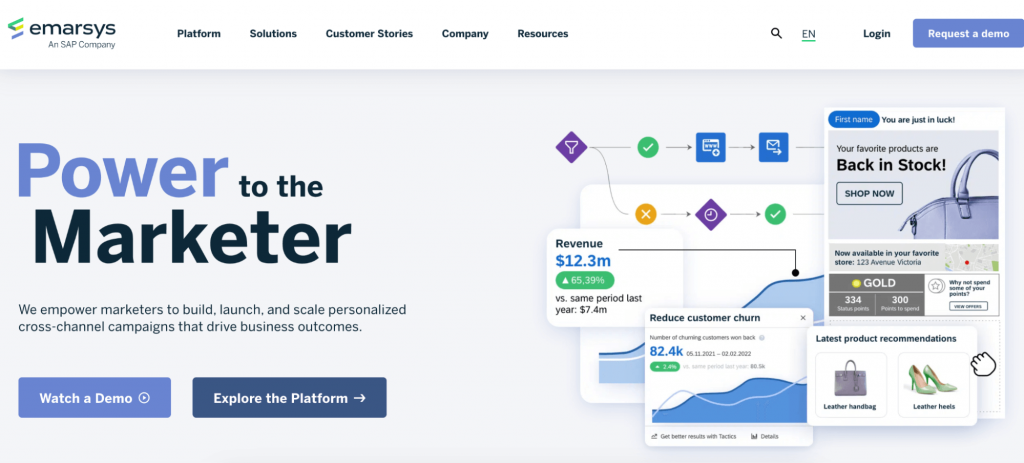
Emarsys empowers digital marketing leaders with an omnichannel customer engagement platform for businesses. It’s a great option for companies that want solid engagement via email. The platform lacks onsite personalization in its journey orchestration, which could lead to inconsistent experience across onsite and other channels, including email.
Learn: 9 Best Emarsys Competitors and Alternatives
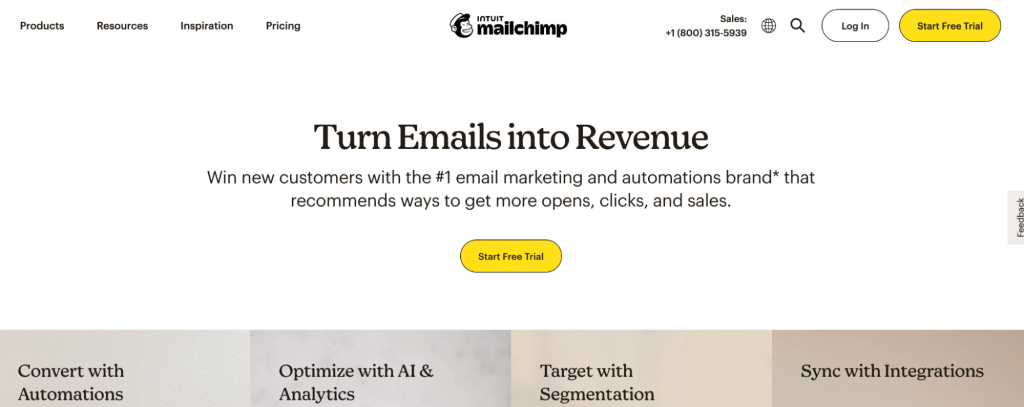
Mailchimp is a well-known email marketing platform with a user-friendly interface and robust features. It provides advanced segmentation options to divide your email list and offers A/B testing—however, it only supports email, which limits marketing opportunities.
Generating revenue from ecommerce mail marketing depends on finding the best software for your business. You need to invest in a platform that can enhance email marketing efforts with AI-powered features, hyper-personalization, and actionable data insights.
Book a demo to discover how global brands, including NA-KD, Slazenger, MAC Cosmetics, and more, use Insider’s email marketing platform to reach and engage their audience and drive revenue.
Ecommerce email marketing involves leveraging an email marketing software to build email campaigns, promote products, engage customers, and boost sales for online retailers.
Common emails in ecommerce marketing encompass promotions, transactions, cart abandonment recovery, product recommendations, customer reviews, and newsletters.
Track key metrics like open rates, click-through rates, conversion rates, revenue generated, unsubscribe rates, and email list growth. Tailor metrics to specific goals, such as abandoned cart recovery rates or customer lifetime value.
Effectively use ecommerce email marketing by segmenting your list, personalizing content, optimizing with A/B testing, following email regulations (e.g., GDPR, CAN-SPAM), and consistently analyzing and refining your strategy to maximize engagement and sales.

Written by
Katie Morley
Katie is an award-winning content marketer with over eight years of experience in content strategy, development, and copywriting. As Global Content Director at Insider, she currently oversees content strategy across 26 regions. Fun fact: Katie read 64 books last year (for which she owes a long commute and two week-long holidays where she spent approximately six hours a day with her nose in a book).